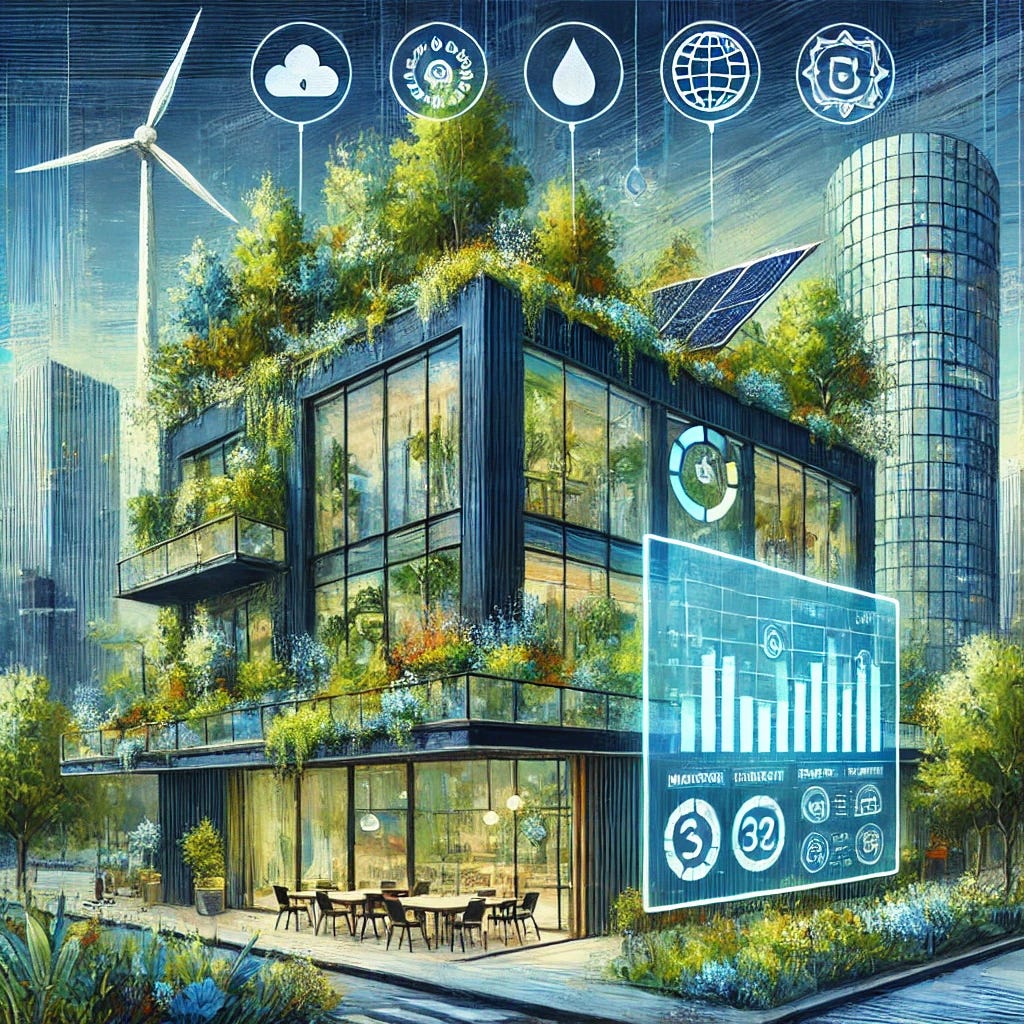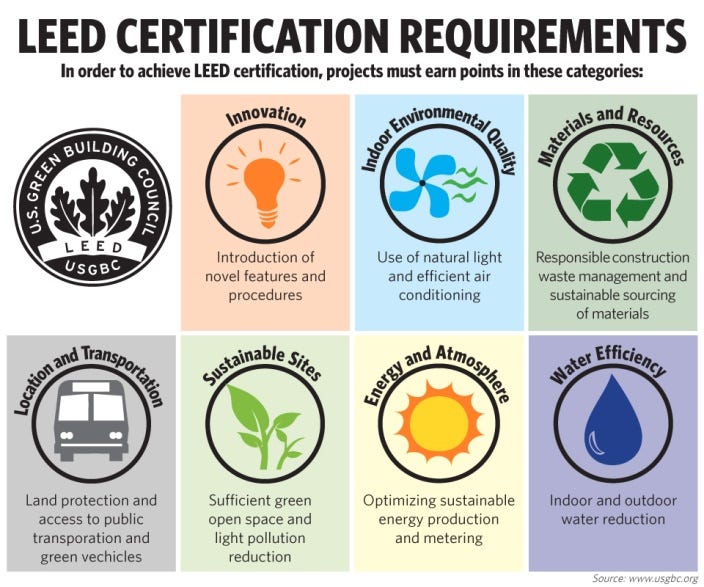Beyond Green Certifications: Why Buildings Need a Sustainability Operating System
Making Sustainability Measurable and Actionable
Welcome to a new issue of the Unlocking Real Estate Value newsletter. Each week I will provide you with exclusive advice and professional insights to help you realise long-term value through real estate development.
Hit reply and tell us why.
Last week, I attended the RICS Conference in Milan, where ESG was the key topic of discussion. I want to focus on the "S"—Sustainability. During a heated panel debate, a concerning realization emerged: sustainability is increasingly being taken for granted, even as the planet has already breached the 1.5°C threshold set by the Paris Agreement.
Furthermore, ESG has been criticized as a regulatory burden in Europe, slowing down growth. While sustainability certifications remain a benchmark for tracking building efficiency, they often fail to translate data into actionable insights.
What This Newsletter Covers:
Why most certification data remains unused and how to make it actionable
The role of digital tools in tracking and optimizing building performance
How an integrated design-thinking approach ensures long-term sustainability impact
Let’s dive in.
1. Certification Data is Stagnant: It’s Time to Make It Actionable
Developers invest significant time and resources in securing green certifications (LEED, BREEAM, WELL), yet the data often remains trapped in static PDFs and reports that fail to drive real improvements.
How can we turn those reports into meaningful action?
Bring data to life with real-time dashboards. Instead of relying on outdated reports, stakeholders can access live data on energy consumption, waste reduction, and water savings, leading to informed decision-making.
Implement ongoing reporting protocols. Moving beyond a "set-and-forget" model, monthly or quarterly tracking of energy and water use ensures continuous improvement and prevents hidden inefficiencies.
Foster transparency and accountability. Standardized data collection enables comparison across multiple buildings or portfolios, making it easier to pinpoint underperforming assets and implement timely corrective measures.
Adapt to evolving sustainability standards. Unlike static certifications, real-time dashboards help developers align with the latest sustainability practices without waiting for the next audit cycle.
The result? A dynamic sustainability operating system that replaces outdated reports with real-time, measurable impact.
2. Leveraging Digital Tools for Real-Time Performance Tracking
Green labels validate a building’s design intent, but real-time data reveals its actual performance. Smart technology integration enables proactive rather than reactive maintenance, ensuring long-term efficiency.
Predict and prevent costly breakdowns. Sensors on HVAC units and other critical systems can detect inefficiencies before they escalate, reducing maintenance costs and avoiding downtime.
Simplify certification renewals. Automation and AI-driven analytics streamline compliance, making it easier and less expensive to maintain sustainability credentials.
Ensure consistent sustainability performance. A data-driven approach eliminates guesswork, reducing energy waste and unnecessary expenses while keeping operations efficient and resilient.
By embracing digital tools, developers can achieve a new level of efficiency, cost-effectiveness, and sustainability.
3. Integrated Design Thinking for Long-Term Sustainability
Ensuring buildings remain sustainable requires integrating real-time data and proactive strategies from the earliest design phases.
Benchmark in real-time. A sustainability operating system enables developers to measure their projects against industry leaders daily rather than relying on infrequent audits.
Go beyond one-time certification. Continuous monitoring helps developers swiftly address inefficiencies before they impact reputation and financial performance.
Reduce costly retrofits. Implementing digital tracking from day one eliminates the need for expensive system overhauls later, making sustainability seamless across an expanding portfolio.
This approach delivers tangible sustainability benefits—lower carbon emissions, reduced operational costs, and future-proofed assets that appeal to investors, tenants, and communities alike.
Conclusion: Sustainability Must Be Measurable, Not Just Certified
While green certifications are a good starting point, they are not enough. Developers must go beyond labels and implement a sustainability operating system that digitizes data, enables real-time tracking, and supports predictive maintenance. By making sustainability measurable, actionable, and scalable, developers ensure that their buildings deliver lasting environmental impact.
Key Takeaways:
Green certifications alone are not enough—real-time data is essential.
Digital tools help optimize performance and reduce long-term costs.
Integrated design thinking ensures continuous sustainability impact.
That’s all for today.
See you next week.
— Carlo
Founder and Managing Director Benigni
Related Articles:
1:1 Video Consultation
I have now opened 5 weekly slots for 1:1 consultations to help you gain clarity on market trends, sharpen your strategy, improve budgeting and mitigate risks.
Click here to book me before slots run out.
Refer a Colleague
PS…If you’re enjoying this newsletter, please consider referring this edition to a friend or a colleague. Sharing valuable insights helps everyone make better investment decisions.
This post is sponsored by Benigni a specialist development manager working with international investors to realise long-term value through optimised development strategies. To learn more click this link to our website.
Subscribe to the Newsletter
A newsletter by Carlo Benigni providing, in less than 4 minutes, exclusive advice, strategies, and resources to help unlock hidden real estate value.
Subscribe for free to receive new posts and support my work.








